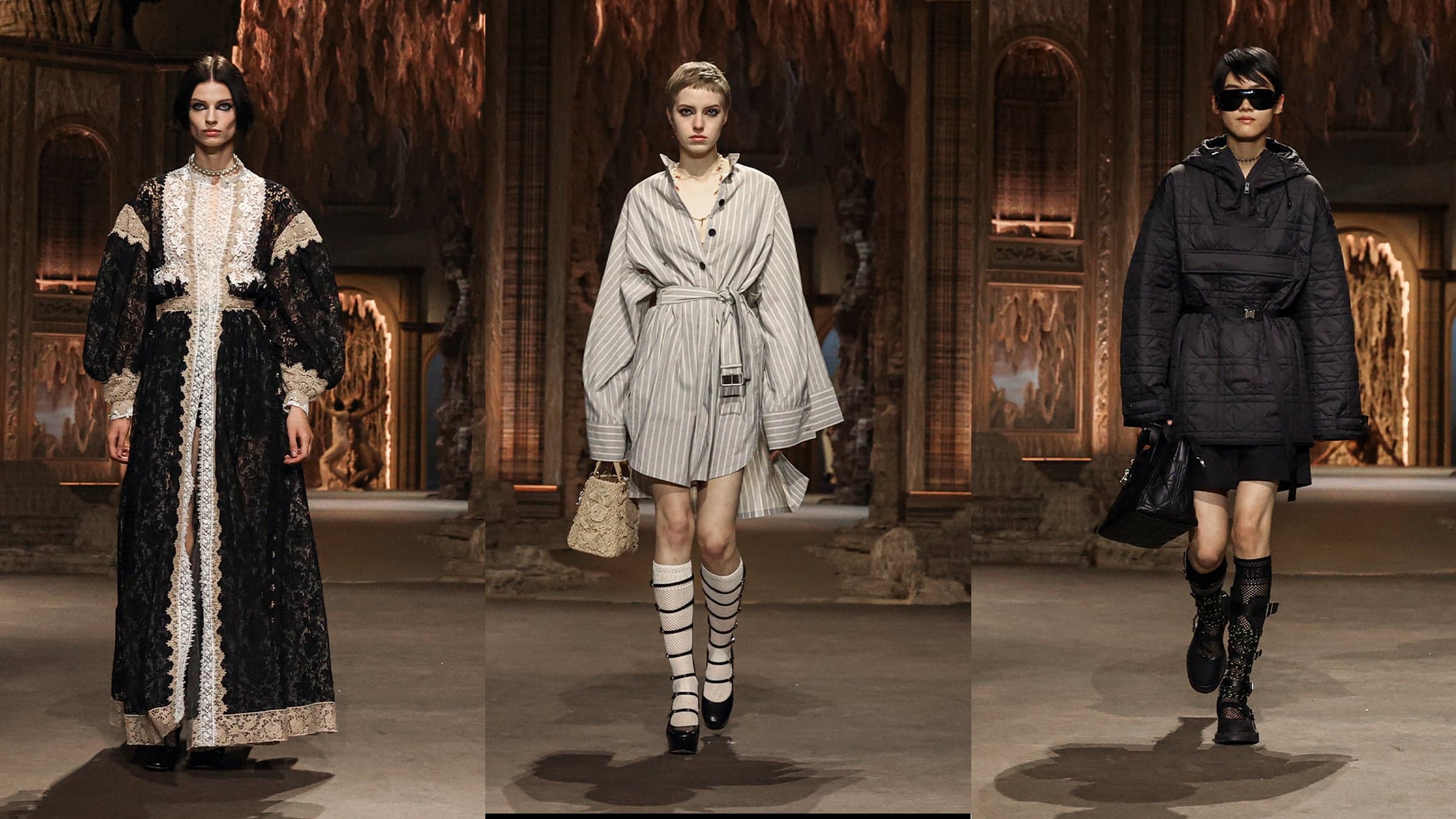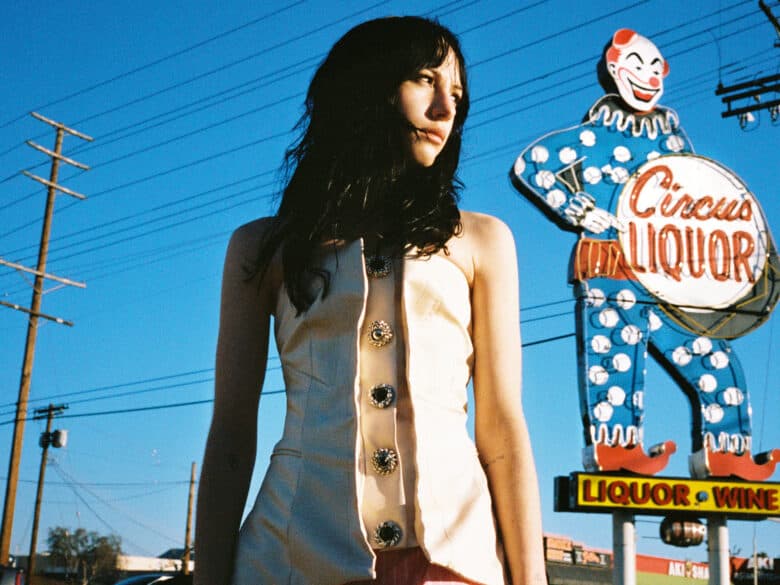Paris Fashion Week: Dior SS23

After the bustle of New York, London and Milan Fashion Week, Dior looks to change the pace in Paris. Framing her SS23 show on what she calls the ‘concept of artifice and fakeness when representing nature’, Maria Grazia Chiuri, who has been at the helm of the brand since 2016, teased audiences with trailers featuring philosophical voiceovers prior to the show. The imagery reaffirms her aims to explore the deceit of nature once reproduced and, by harnessing the power of femininity, create a story on the relationship of the two.
Set between the Louvre and the Place de la Concorde, the show from the Jardin des Tuileries delves, from the outset, into the ancient artefacts of France. The interior of the Jardin is transformed into cave-like formations, sections held window-frames and 16th century architectural designs amongst the walls. Opening on an emotive performance from interpretative dancers, their movements are slow and steady as they introduce the first model who weaves onto the runway. The camera pans to between the nooks as audiences look on through the caves arch, lined with dimly lit flowers.
Transcending from a palette of monochrome black, whites and beige comes florals, and an injection of subtle greens and oranges. There were lace-rimmed nightie-like dresses, emanating the evening attire of both royals and young girls, and gothic silhouettes pulled on the strings of mourning. However, it was the structure of the garments that piqued interest in terms of the relationship to art in the collection. Physically they rendered exposed torsos and hoop skirts, whether that be gracing the waist or the ankles. The lace consumed the blocks of colour, so that the romantic tendencies of the designs married beautifully to the work of the ateliers, and in turn, a shadow of rebellious spirit fell over the show.
The contrasts of light and dark, both in looks sent down the runway and the set itself, reflected the influence of Catherine de’ Medici on the collection. Known as the Serpent Queen, the Machiavellian noblewoman was widely hated, which many speculate to not be the fault of her accused sins but rather her womanhood.
The Baroque-inspired silhouettes draw from the period but allow scope for a modern update. By loosening the grip of the traditional corset design, Chiuri transforms the body pieces into more linear affairs, and introduces pieces like utility, drawstring pants to what could have been a stifled testimonial to the time. Dior embraces both the modern and traditional feminine silhouette while reigning true to the long gowns and lace collars of Medici. As Medici once did upon her arrival at the French Court, the show remains an emblem of innovation for women and their power, be it not only in their costume but their role in politics.

